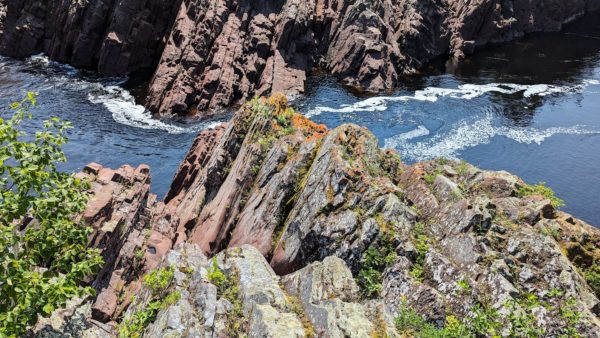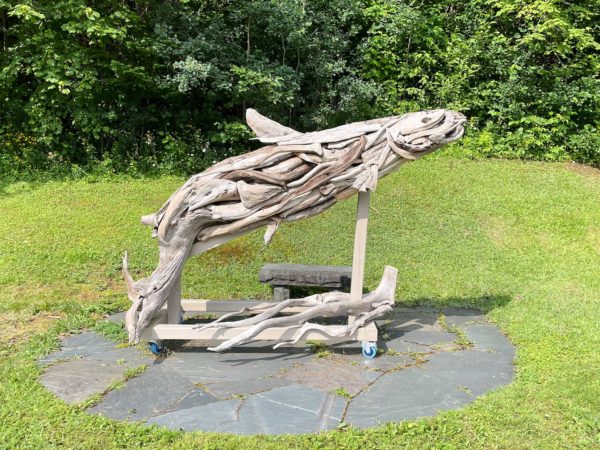
We headed inland from the west coast, driving along big rolling hills, almost always with a lake or river beside the road. The sign said ‘Welcome to Grand Falls-Windsor – Perfectly Centered!’ That’s a fact. GFW is in the center of Newfoundland, and it’s the largest town in the interior. It’s also away from the natural breezes that keep things cool along the coast – a feature which, during the rare heat wave that’s been afflicting Newfoundland, made for a hot town!
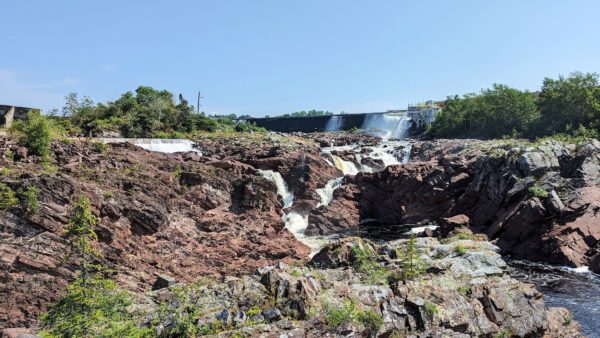
We decided it was time to fix the truck air conditioner (the one on the engine). It actually hasn’t been working for a while, but we hadn’t needed it and we’d run across few opportunities to have it fixed in the remote areas we’ve been in, anyway. Now it was becoming urgent, and there were resources at hand. We had to wait 3 days to schedule the repair, and that turned out to be fine. After our whirlwind tour of the Great Northern Peninsula and Gros Morne National Park, staying still for 3 days was welcome. We found a small, funky campground in a municipal park in nearby Bishop’s Falls (actually right at the falls, adjacent to the dam), with electricity and a good cell signal. This meant we could use the roof air conditioner in the RV to stay cool and get caught up with a bunch of things, and maybe even play some music. Paul, the manager of the campground, asked us if we planned on fishing.
Me: Nope.
Paul: Too bad. This place (he means the park!) is known for the Atlantic salmon run, and they’ve come back enough that they’re allowing fishing on this river again. They’re running now, that’s why we’re so full!
Me: Is Atlantic salmon different from Pacific salmon?
Paul: Oh yeah, it’s prettier. You should go to the Salmonid Interpretive Center at Grand Falls.
Me: OK.
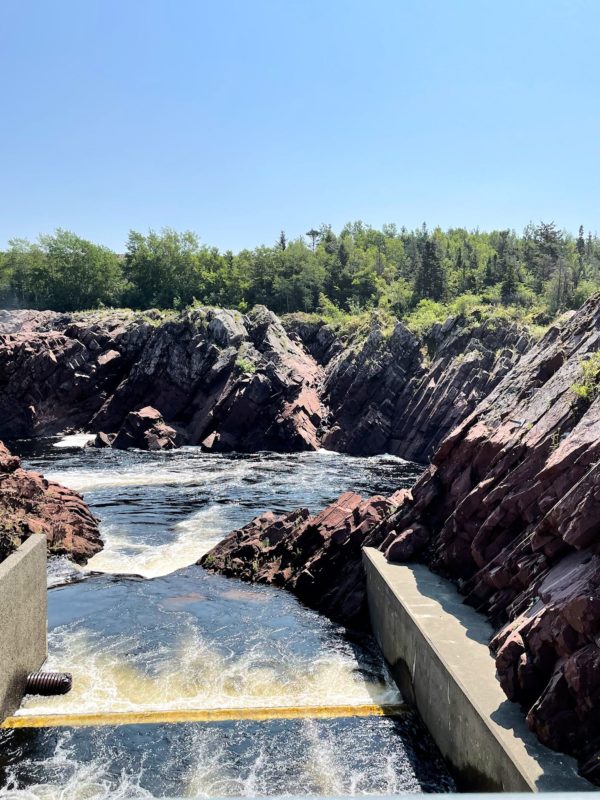
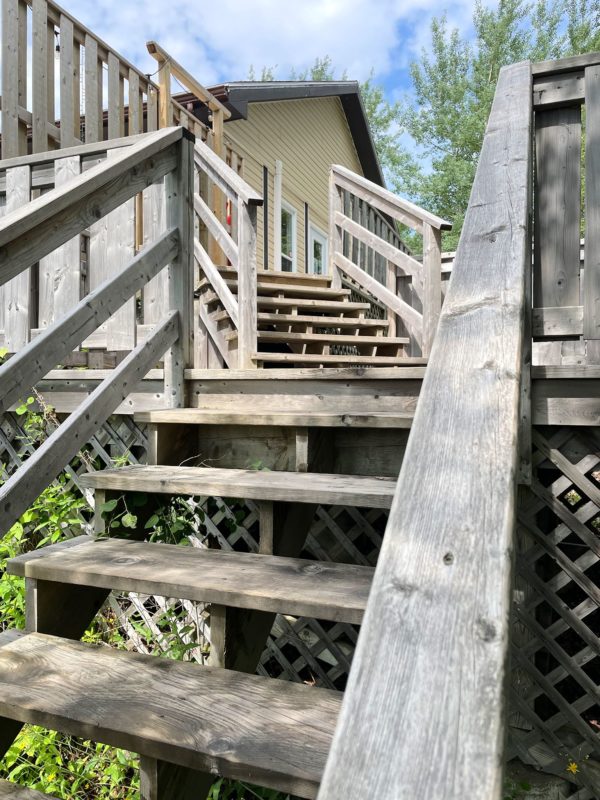
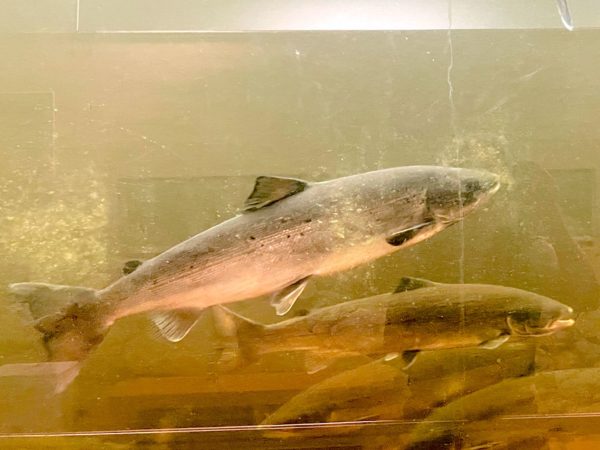
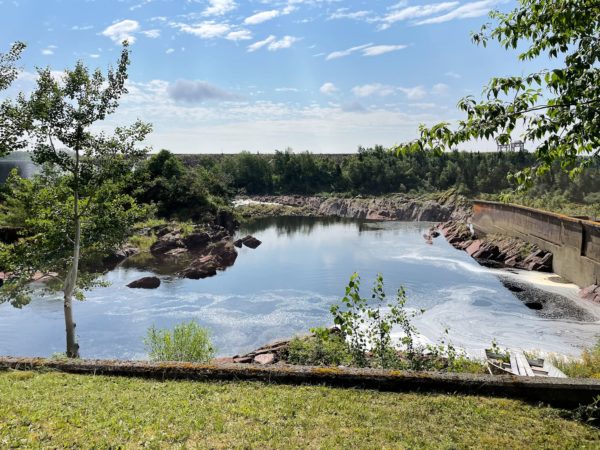
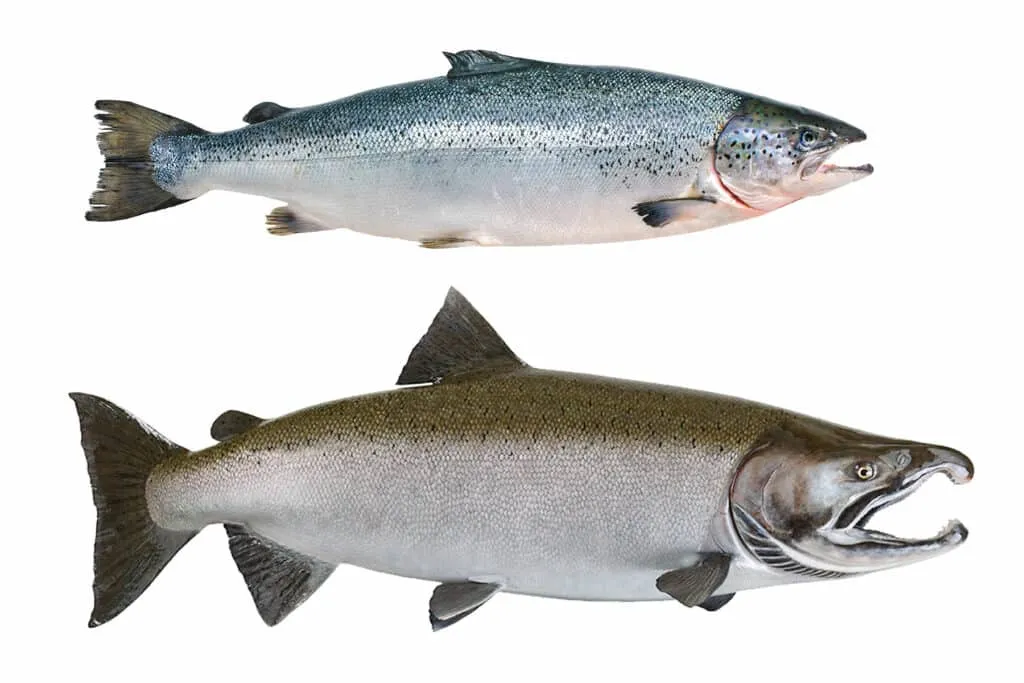
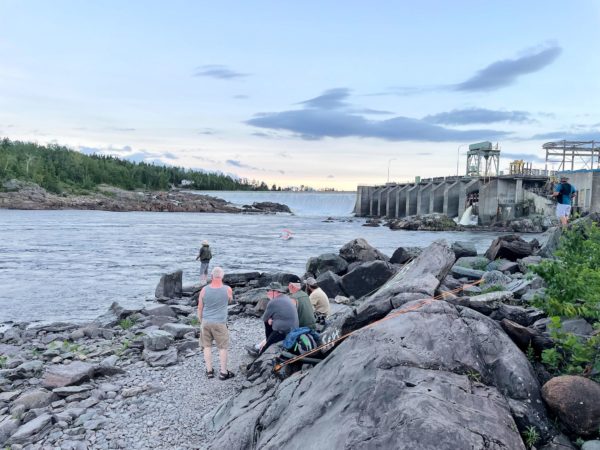
What a cool place! (And it was air conditioned, too…) We learned Atlantic salmon is very different from Pacific. All salmon are born in fresh water, mature in saltwater, and return to the exact river of their birth to spawn. While Pacific salmon make one such trip in their lifetimes (at the end of the trip, they die), Atlantic salmon might make 3-4 trips. The largest of the Pacific salmon can be 1.5 metres/5 feet long, while a big Atlantic salmon is generally <1 metre/3 feet. And yes, Atlantic salmon are better looking and, although both change form and color during spawning, the transformation of the Pacific salmon is much more dramatic. Of course, the Pacific ones only do that once, while the Atlantic salmon change back and forth each time they move between their salt-water and fresh-water phases.
The Exploits River, at 246 km/153 miles, is the longest river in Newfoundland. We didn’t realize it at the time, however we’d followed the river almost in its entirety across the island. There’re 5 dams, including in Grand Fall-Windsor and Bishop’s Falls. Efforts have been underway for decades to restore the river for salmon, which nearly vanished due to changes to the rivershed from logging paper mills, and power generation. Using the latest salmon technology, fishways (formerly known as fish ladders) have been built alongside the dams to enable the salmon to return to their native spawning areas. In the 70’s, 2000 salmon made the trip upstream. Currently, 30,000 salmon make the trip up the Exploits River while estimates suggest the river could handle well over 300,000 fish in annual migration. It’s been a tough run, but it looks like hydropower can co-exist with salmon conservation.
The Salmonid Center included a cute cafe and we thought we’d treat ourselves to lunch. Salmon sandwich? No way, these are endangered and Atlantic salmon are not commercially fished. Grilled cheese…
For anyone who’s interested, more Salmonid Interpration Centre pix…
